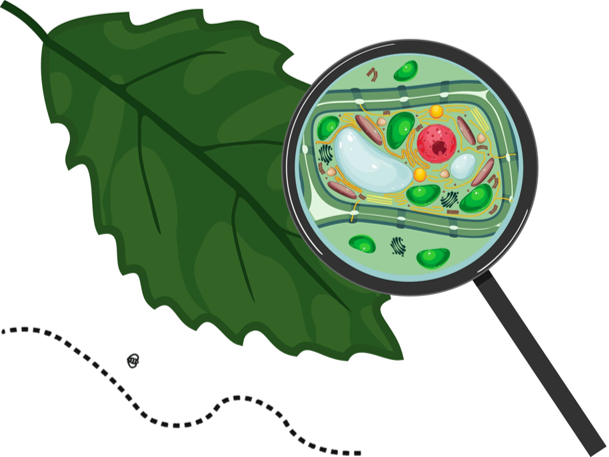Organelles
Summary of the functions of organelles
Cell organelles are components of the cell that provide support through a range of functions. These can be both membrane bound and non-membrane and, together, they provide shape, structural support, locomotion and cell reproduction. Below are a list of organelles and the specifics of their operations.

Organelles | Single membrane bound Organelles | Double membrane bound Organelles |
Cell Membrane – This is composed of a lipid bilayer and proteins and acts as a selectively permeable barrier in both plant and animal cells. By being selectively permeable, it means that cells and molecules require permission from the organelle to enter the cell, protecting it, and ensuring only useful materials enter. It additionally provides shape and protection via a fluid mosiac model for the inner contents of the cell. The fluid mosaic model explains the structure and behaviour of cell membranes. This suggests that the membrane is made up of a layer of phospholipid molecules that contain proteins and that these components move and interact within the membrane.
Cytoplasm – Once again, present in both plants and animals, the cytoplasm is a jelly-like substance situated between the nucleus and cell membrane. This plays an essential role for all organelles due to it being the location where they are embedded, preventing them changing location. Additionally, the cytoplasm contains several enzymes responsible for controlling the metabolic activity of the cell.
Nucleus – The largest of the organelles and functions as it is the control centre of the cell and contains the cell’s DNA (deoxyribonucleic acid) in chromosome form. The nucleus is able to duplicate DNA, synthesising a new, identical copy, this is often referred to as nuclear replication. Chromosomes are complex, dynamic structures that play a crucial role in the transmission of genetic information. They are composed of DNA and a variety of proteins, which together form a highly organized and compact structure that is essential for the proper functioning of the cell.
Mitochondria - Mitochondria are the "powerhouses" of the cell, as they are responsible for generating the majority of the cell's energy in the form of ATP. Mitochondria are small, double-membrane-bound organelles that contain their own DNA and are thought to have originated from ancient bacteria that were engulfed by larger cells.
Endoplasmic Reticulum - The endoplasmic reticulum (ER) is a network of flattened sacs and tubes that is involved in the synthesis and transport of proteins and lipids within the cell. The ER has two forms: the smooth endoplasmic reticulum, which is involved in the synthesis of lipids, and the rough endoplasmic reticulum, which has ribosomes attached to its surface and is involved in protein synthesis.
Golgi Apparatus - The Golgi apparatus is a stack of flattened sacs that is involved in the modification, sorting, and packaging of proteins and lipids that are destined for export from the cell. The Golgi apparatus receives vesicles from the ER, modifies the proteins and lipids they contain, and then sorts them into new vesicles that are sent to various destinations within the cell.
Pili - Pili are thin, hair-like structures that are found on the surface of some bacteria. Pili are used by bacteria for a variety of functions, such as attachment to surfaces and other bacteria, exchange of genetic material through conjugation, and the transfer of toxins to host cells. Pili are made up of proteins called pilins and are typically much smaller in diameter than flagella, another type of bacterial appendage.
Flagella - Flagella are driven by a motor that is powered by the proton gradient across the cell membrane, and they can move in a variety of ways to allow the cell to swim through its environment. In some cases, flagella are used for attachment to surfaces, rather than for motility.
Ribosomes - Ribosomes are small, spherical organelles that are found in the cytoplasm of both prokaryotic and eukaryotic cells. Ribosomes are composed of RNA and protein and are the site of protein synthesis in the cell. Ribosomes can either be free in the cytoplasm, or they can be attached to the endoplasmic reticulum to form what is called the rough endoplasmic reticulum (RER).
Nucleoid - The nucleoid is a region of the prokaryotic cell that contains the cell's genetic material, which is usually a single circular chromosome of DNA. The nucleoid is not surrounded by a membrane, as is the case with the nucleus of eukaryotic cells. Instead, the nucleoid is held in place by proteins and is not well-defined in terms of its shape or size. The nucleoid is the centre of the cell's genetic activity, and it is here that the cell's DNA is replicated, transcribed into RNA, and then translated into proteins.